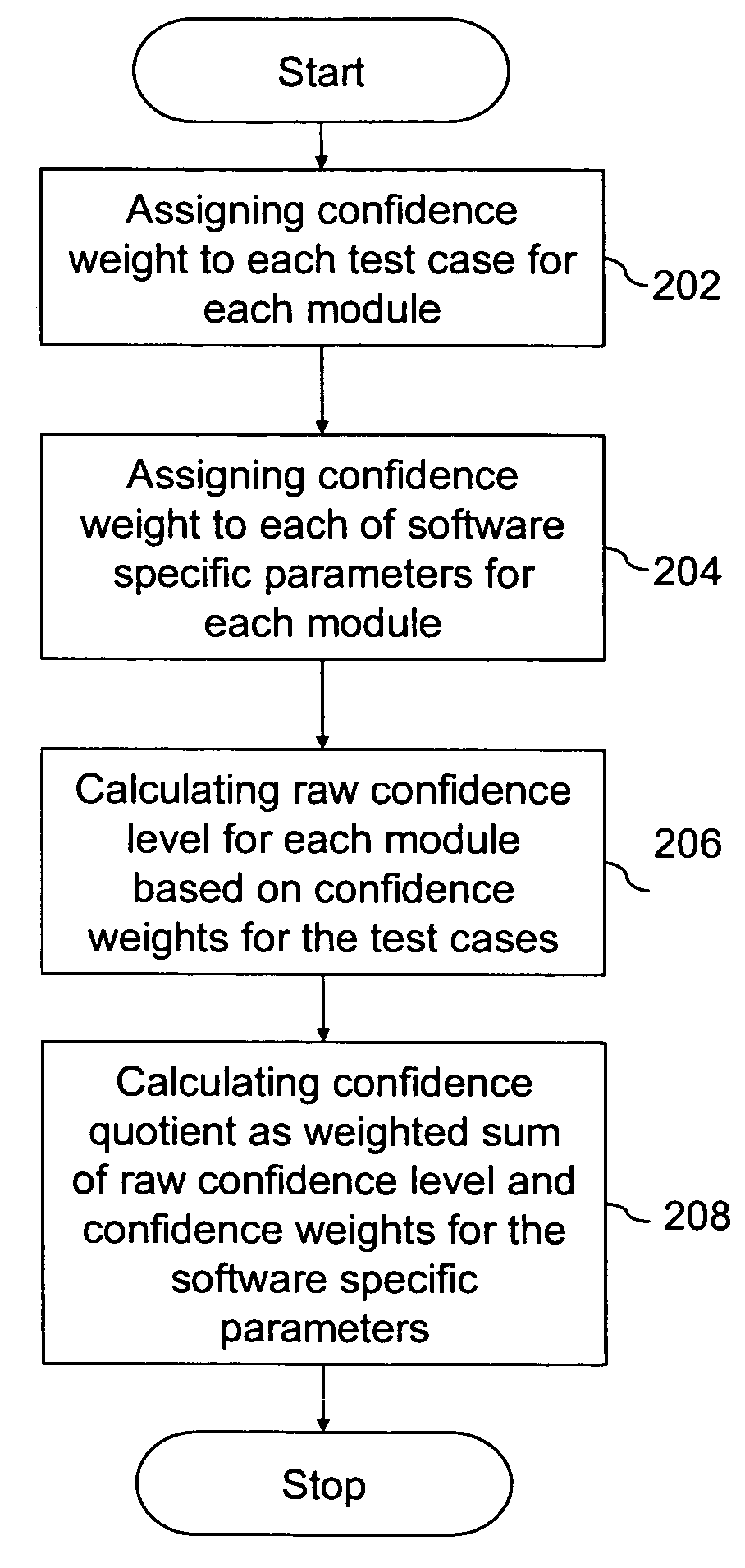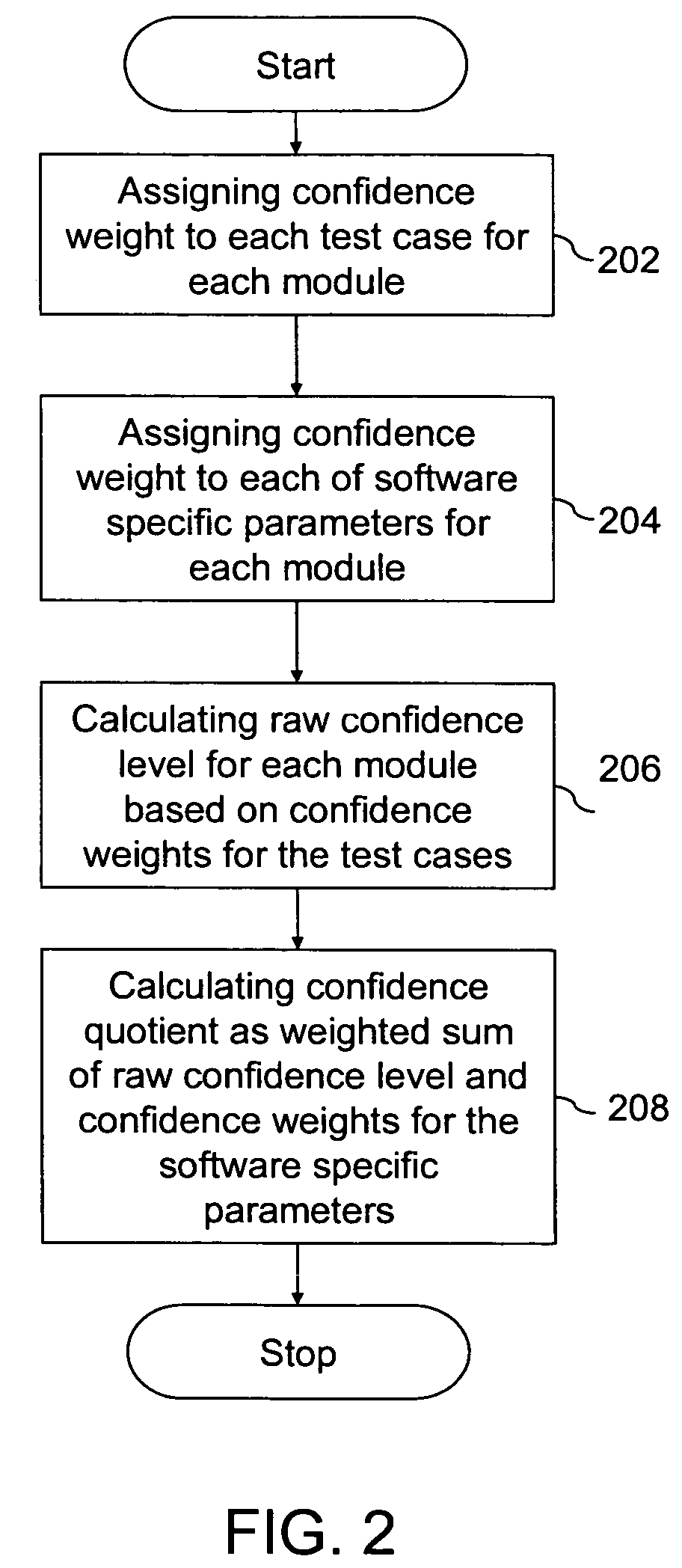System and method of analyzing risk in risk-based software testing
a risk-based software and risk analysis technology, applied in the field of software testing, can solve problems such as reducing the quality of software products, stretching the testing cycle of software testing, and many defects undetected in modules
- Summary
- Abstract
- Description
- Claims
- Application Information
AI Technical Summary
Problems solved by technology
Method used
Image
Examples
Embodiment Construction
[0007]Embodiments of the present invention provide a system for quantitatively analyzing the risk in testing software comprising at least one module. Testing comprises obtaining the behavior of each module to each of a set of test cases. Computation of risk may be based on the empirical data from test execution of each module. For various embodiments of the present invention, the system comprises a module for assigning a confidence weight to each test case for each module based on its test history, and a module for assigning a confidence weight to each of software specific parameters. The system may additionally comprise a module for calculating a raw confidence level for each module (e.g., software module) based on the assigned confidence weight, and a module for calculating a confidence quotient of each module (e.g., software module) as a weighted sum of the raw confidence level of each module (e.g., software module) and the confidence weight of each software specific parameter. T...
PUM
 Login to View More
Login to View More Abstract
Description
Claims
Application Information
 Login to View More
Login to View More - R&D
- Intellectual Property
- Life Sciences
- Materials
- Tech Scout
- Unparalleled Data Quality
- Higher Quality Content
- 60% Fewer Hallucinations
Browse by: Latest US Patents, China's latest patents, Technical Efficacy Thesaurus, Application Domain, Technology Topic, Popular Technical Reports.
© 2025 PatSnap. All rights reserved.Legal|Privacy policy|Modern Slavery Act Transparency Statement|Sitemap|About US| Contact US: help@patsnap.com



